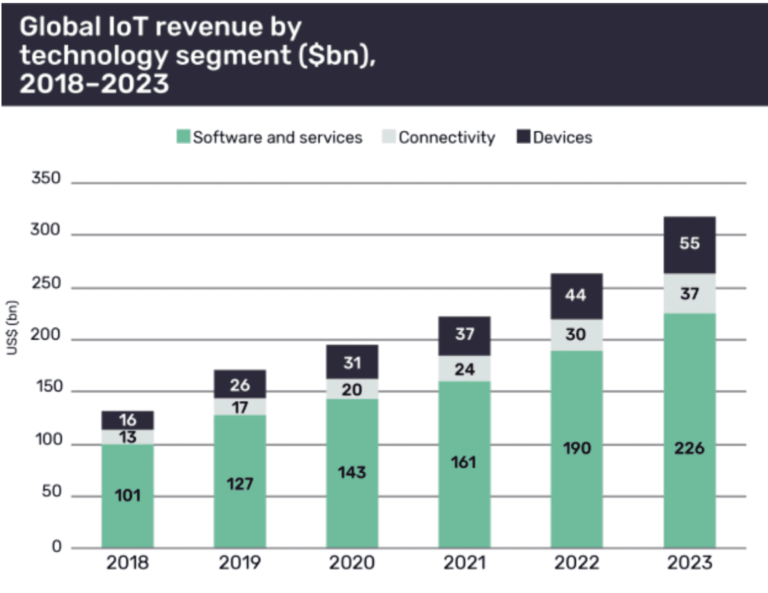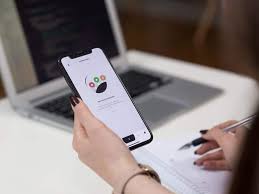The Mobile app development industry keeps changes with the newest technological advancements, consumer behaviors, and the huge volume of several other factors that directly or indirectly impact and influence the current mobile app trends. Mobile app sellers and developers must keep up with all the newly emerging trends to provide their clients with a better user experience.
Following is a list of all the important mobile app development behavior of 2020. You will also need to keep these mobile app future trends in mind while developing your app.

1. IoT integration-
IoT is no more just a new concept. The rise in mobile usage has created endless opportunities for IoT to flourish. People are getting increasingly accustomed to using technology for improving their daily life. IoT provides convenience and automated control to the users. A perfect example of IoT would be smart home technology.
IoT integration in mobile apps can allow users to adjust the thermostat in their houses from a remote location, lock or unlock the front door, and even connect with home security systems in no time. Household appliances like refrigerators and the like can also be connected to mobile apps easily.
It is expected that the global IoT market will reach $194 billion by the end of 2020, $143 billion of which is expected to be generated from software that includes mobile applications. Beginning from household devices to automobiles and healthcare are the three specific factors that we should keep a watch on.
2. Applications for foldable devices-

Foldable devices have been making a comeback in the market since the last couple of years. In 2019, foldable devices were launched that include Samsung Galaxy Fold, Motorola Razr, and Huawei Mate X.
These smartphones can be folded in order to compress or expand the screen size based on the preference of the users. From the perspective of app development, resellers, and content creator need to keep these devices under consideration when they are making or updating a mobile app.
The apps will be seamlessly adjustable to its display when the user folds or unfolds the device screen. Studies reveal that 17 percent of the iPhone users and 19 percent of the Android users are looking forward to purchasing a phone with a foldable design. You may Hire Dedicated Developers for this purpose.
3. 5G-

The launch of 5G technology has had a major impact on the app trends of 2020. Developers, resellers, and creators need to pay attention to the fact that 5G is going to change the way current apps are created and used.
2020 is expected to have fifteen times more 5G connections as compared to 2019. Imagine the growth in the next few years. Speed and efficiency in the digital world are going to improve significantly. 5G is predicted to offer 10 times decrease in latency. It will also boost network efficiency and capacity for traffic.
5G is going to 100 times faster than 4G. The rise of 5G will boost the functionality of mobile apps, allowing developers to add new features to their applications without negatively influencing the performance of the app. They should also use a 5G network when testing or developing the app.
4. Wearable Devices-

Wearable technology has been experiencing an upward trend in the last couple of years in the mobile app industry trends, and that cannot be called a breakthrough in the market. Wearable devices are yet to reach their fullest potential yet the growth is quite steady.
The wearable device trends will keep changing the way in which the developers develop mobile apps. Independent apps are being created particularly for such devices, creating an enormous pool of opportunities for app resellers and content creators.
In 2020, mobile apps will be developed keeping in mind the growing popularity of wearable devices.
5. Beacon Technology-
Beacon technology has found its way into a wide range of industries beginning from the retail industry to the healthcare and hospitality industries. Beacons have the capability to add in advanced functionalities to almost any mobile application. Back in 2013, we saw the first mobile app beacons, and over the last couple of years, this technology has undergone several significant advancements.
For example, if you are an app reseller that creates apps for retailers, your clients can install beacon in their stores connected to the user’s smartphone via Bluetooth if the user has your app on their device. When your user comes across a beacon, you can instantly notify them about a sale or special offer on the products in your store. You can also track buyer behavior in stores using beacons.
Beacons can detect when a buyer is spending a significant sum of time in some specific aisle of your store. Your app can trigger a push notification for enticing a sale at a later date related to the same products the user was interested in. Statistics reveal that the estimated market value of the beacon technology will reach $56.6 billion by the year 2026. You can hire a Mobile App Development Company to get beacon technology implemented on your app.
6. Mobile Commerce-
The mobile commerce trend has been dominating 2018, 2019, and will continue to dominate 2020. Almost everyone is leveraging mobile applications for earning more revenue. The mobile commerce functionality stands as a top feature for mobile app resellers that they can highlight while pitching to their clients.
We are quite gradually approaching the times when every business will need a mobile commerce app to stand strong in the market competition. Studies reveal that by the end of the year 2020, more than 70 percent of the gross eCommerce sales will be generated from mobile devices alone. Hence, you have to keep up.
7. AI Technology-

AI and Machine Learning have been making its place in the mobile app development industry since quite a few years now. Talking about AI, virtual assistants like Siri or Alexa are perfect examples. But the use cases can definitely go beyond just virtual assistants for mobile app development.
The examples of all the possible AI features that can be integrated into a mobile app would include image recognition, face detection, text & image classification, sentiment recognition and classification, speech recognition, and predictive maintenance. Artificial intelligence has the power to make mobile apps smarter and help them with improved performance at each level. AI will change the way apps are being built in 2020 beginning from the backend development to the front-end development.
8. Mobile Wallets-
Mobile Wallets like Google Pay, Apple Pay, and Samsung Pay are gaining more popularity with time. Recent studies show that transactions worth $6.1 billion have been made form mobile wallets in 2019, which is estimated to reach $13.98 billion by the end of 2022.
The mobile wallet market is hence, expected to double by in the coming to years. Hence, if you are planning to develop a mobile app for your business in 2020, you must take mobile wallet features into consideration. Wallet integration has to be a standard feature for every application that involves the processing of transactions.

9. Augmented Reality-
Augmented Reality is trending upwards and will continue to trend the same or more in 2020 and also in the following years. AR can be used in mobile app development for a varied range of use cases.
Pokemon Go was the first to pave the way for the entry of AR technology in mobile app gaming. L’Oreal Paris also uses AR for their Style My Hair app, where the AR technology helps show different hairstyles and colors directly on the user. It also has a virtual makeup app that shows how various makeup styles look on the face of the user. Google Maps also came with a “Live View” feature using which the users can see turn by turn directions in real-time on real-world imagery.
When you point the camera of your device at the buildings and street signs, the app can identify where exactly the user is. Workforce apps can also use AR-based training programs for training employees.
10. Chatbots-
Chat-bots have come into prominence for more than a decade now and the first interaction with these bots was towards the end of the late 1990s on AOL Instant Messenger. Chat-bots have significantly evolved over the years and the use of chat-bots on websites have increased in popularity because of customer demand.
Yet, there are only a few apps available on the App Store and Google Play Store that actually use chat-bots. The responses of Chat-bots are becoming more human-like because chat-bots are driven by AI technology. The global chat-bot market experiences a growth of 24 percent every year. By the end of 2020, virtual assistants will be facilitating 25 percent of all customer service tech interactions.


 WhatsApp us
WhatsApp us